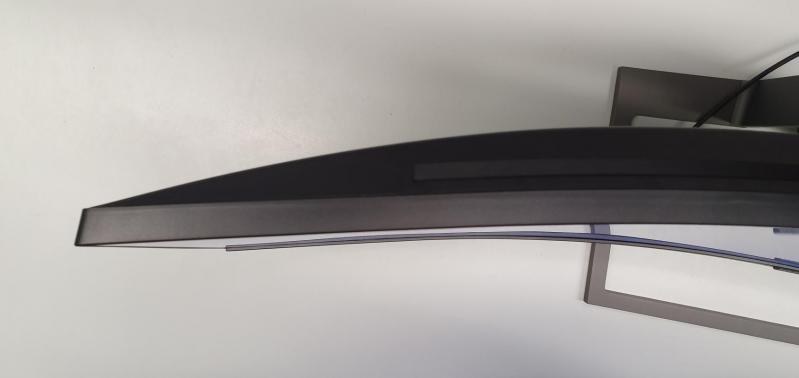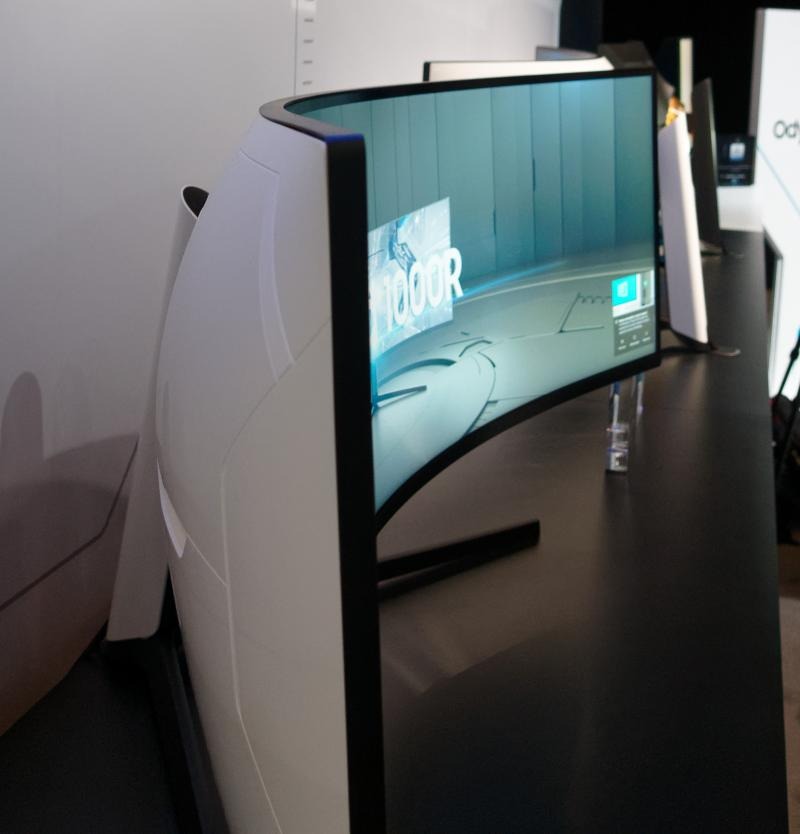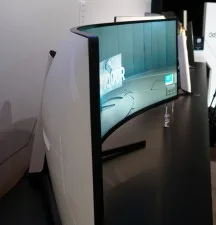Quite a lot of larger monitors are, at least somewhat, curved. I have had some interesting conversations about the amount of curve and the value of the curve over the last couple of months, so I thought it was worth a look at the topic.

Curved monitors lagged behind the arrival of curved TVs. I railed against the idea of curved TVs when they were introduced and I remain negative about them in TV applications. First, why were curved TVs launched? Well, the idea came from the OLED makers. As LG has demonstrated with its rollable OLED TV concepts (said to be coming to market this year), OLEDs can be very flexible because the active layers can be so thin. So, OLED makers thought that they could get one over the LCD industry, as making a curved LCD is much harder. The physics is not tricky, but the engineering has to be extremely good to get good uniform appearance over the whole display, avoiding effects such as moiré patterns or low efficiency. It’s hard to get two curved surfaces perfectly aligned, especially at a low cost.
However, as I have often said, “don’t bet against the engineers”. It turned out that LCD makers were able to make curved TVs, with Samsung’s TV business clearly the best at that. (I suspect that it was Samsung’s TV business, rather than the LCD business so that Samsung didn’t have to share the technology with Sony, with whom Samsung had an LCD-making JV at the time). Anyway, lots of companies announced and demonstrated curved LCD TVs, but Samsung was the only one that really sold volume.
I always felt that curved TV didn’t make sense. TV viewing is generally a shared experience and a curved screen should really be optimised for a single ‘sweet spot’ – just one viewer. Some analysts disagreed with me, but it seems the public didn’t and eventually curved TVs joined 3D TVs in the rear view mirror of TV ideas that didn’t catch on with the publiMonitors on the other hand….
However, on the same basis, curved desktop monitors make sense for a couple of reasons. First, the monitor will be used by a single user nearly all the time, so there is no problem to have a single sweet spot. Secondly, the ergonomics of the desktop and the human visual system mean that monitors should not be too high – not really above the user’s eyeline. So, as the size increases, once you get to a certain height (in my case, a 32″ 16:9 display), a larger height means that the head is tilted back too far, making the display less comfortable for extended use.
Once you get to about 32″ diagonal, you need to go to wider aspect ratios at 21:9 or even 32:9 or to multiple displays. Once you widen the display, the viewing angle to the edges of the display start to get relatively acute if you have a single display. That, in turn, reduces the performance of the display, especially with VA LCDs, which lose a lot of contrast and show colour distortions when viewed from the side.
Moving to a curve mitigates this issue as it moves the viewing angle closer to the right angles that you see at the centre of display, which is the optimum, whichever LCD technology is used.
An SID research paper published in 2019 showed that users saw better performance and more comfort in displays that were curved, and that the more curve there is, the better the effect, although the limit of the testing was a radius of 1700mm.
So, curved monitors seem like a good idea. However, how curved are they? A couple of months ago, I heard of users grumbling that in business applications, they don’t feel really comfortable because the displays they were using are not uniformly curved. They are curved in the middle to the radius quoted in the specifications (typically 1500mm radius), but they flatten off as you get towards the edges. That can be disconcerting because the surface geometry is changing as you move your point of view from the centre to the edges. Below is a picture of one the monitors that provoked this effect.

At CES last month, Samsung announced a new curved monitor (the G9 gaming set) with an even tighter radius of just 1,000mm – it’s very obviously curved – in the middle. However, you can see from my picture below, it’s quite flat towards the edges. I discussed this with the monitor team at Samsung’s “First Look” event in Las Vegas and they said that the shape is the way it is because of the difficulty of maintaining quality on the sides with such a tight curve. They made it as curved as they could, without hitting quality too much.
 Image:Meko. Click for higher resolution Samsung has developed that monitor for gaming and gamers focus very much on the centre of the display. In fact, a lot of top gamers like smaller displays to keep more and more of the scene in a tight viewing cone and avoid having to change their gaze (I’ll try to return to this topic in a later DD). As a result, the curve on a gaming monitor is more about adding to the feeling of immersion, rather than being to allow access to more area for looking at detail. So, the tight curve on the Samsung should add to the experience despite the flatter ‘wings’, without the disadvantages seen in this kind of configuration in business applications.
Image:Meko. Click for higher resolution Samsung has developed that monitor for gaming and gamers focus very much on the centre of the display. In fact, a lot of top gamers like smaller displays to keep more and more of the scene in a tight viewing cone and avoid having to change their gaze (I’ll try to return to this topic in a later DD). As a result, the curve on a gaming monitor is more about adding to the feeling of immersion, rather than being to allow access to more area for looking at detail. So, the tight curve on the Samsung should add to the experience despite the flatter ‘wings’, without the disadvantages seen in this kind of configuration in business applications.
I have a flat monitor, and really didn’t notice the issue when I last long term tested a 34″ curved monitor. so would love to hear any feedback from long term users of wide, curved displays. (BR)

